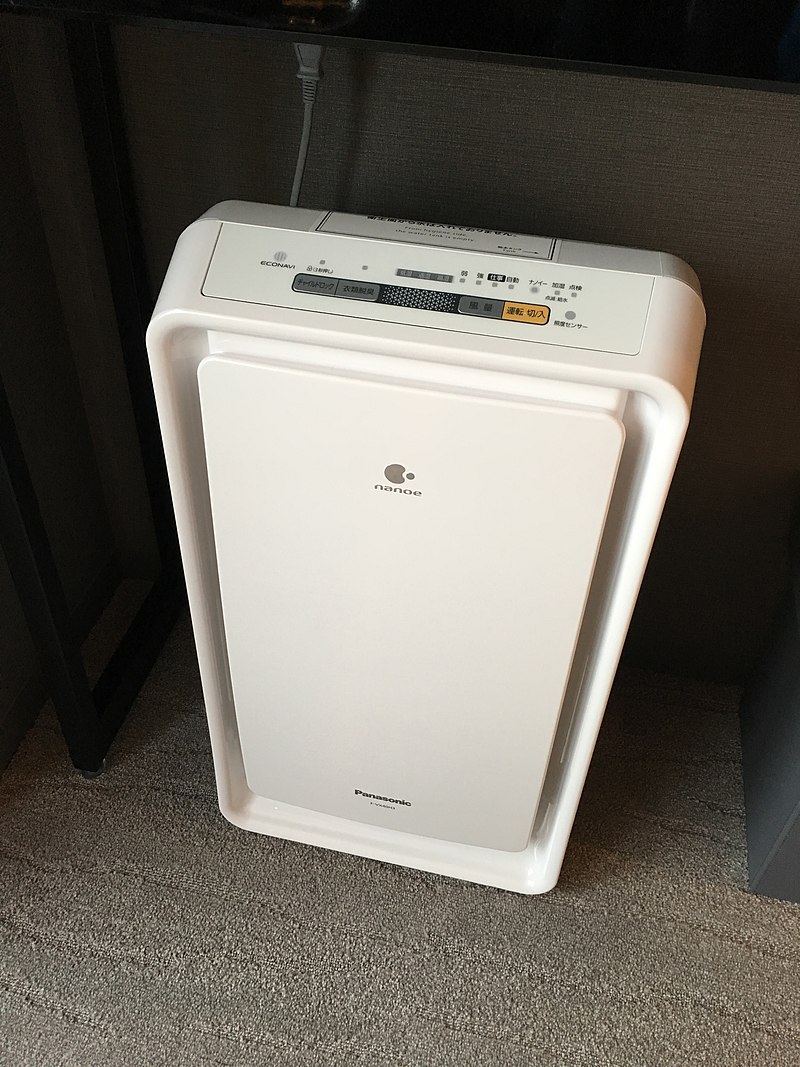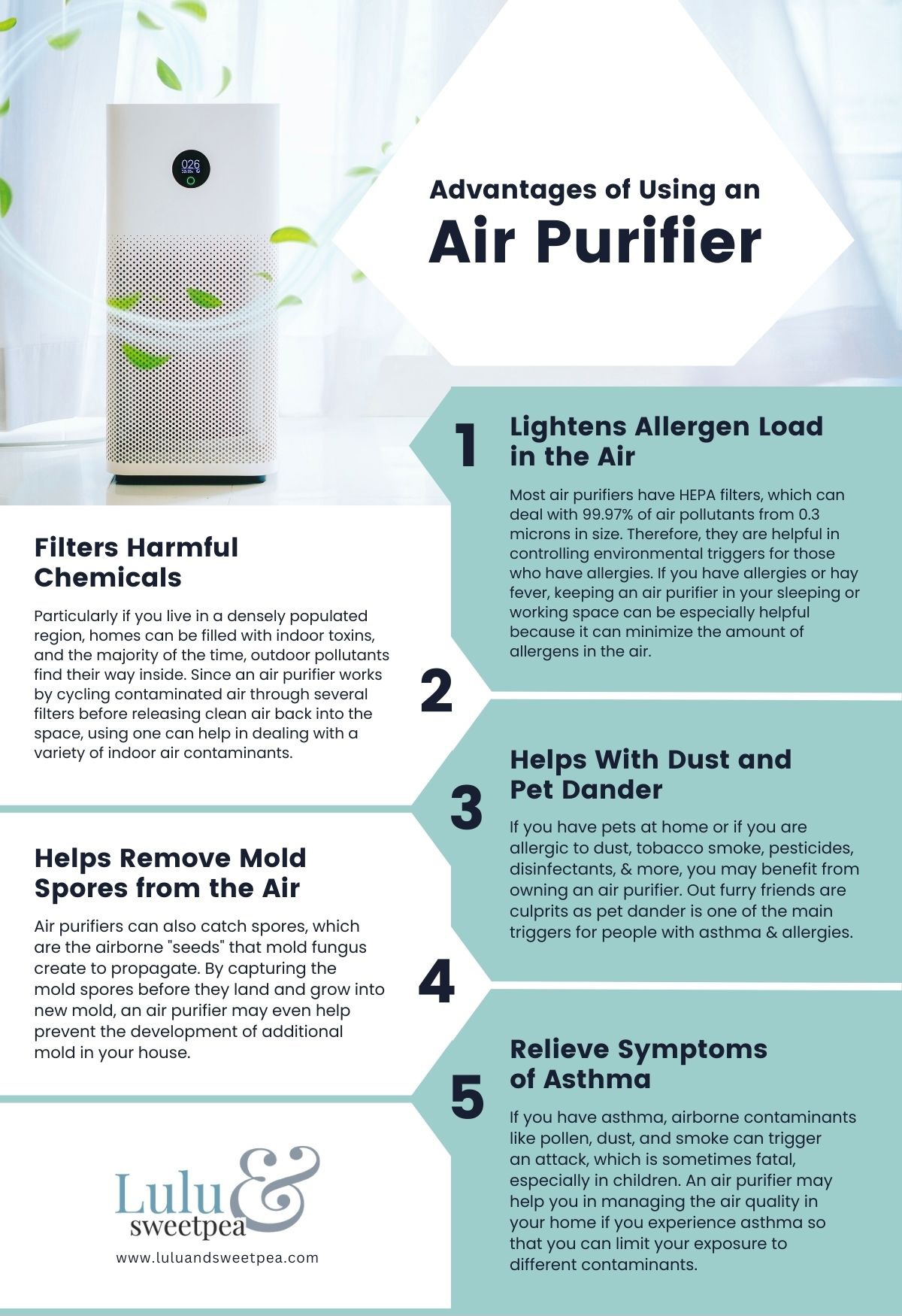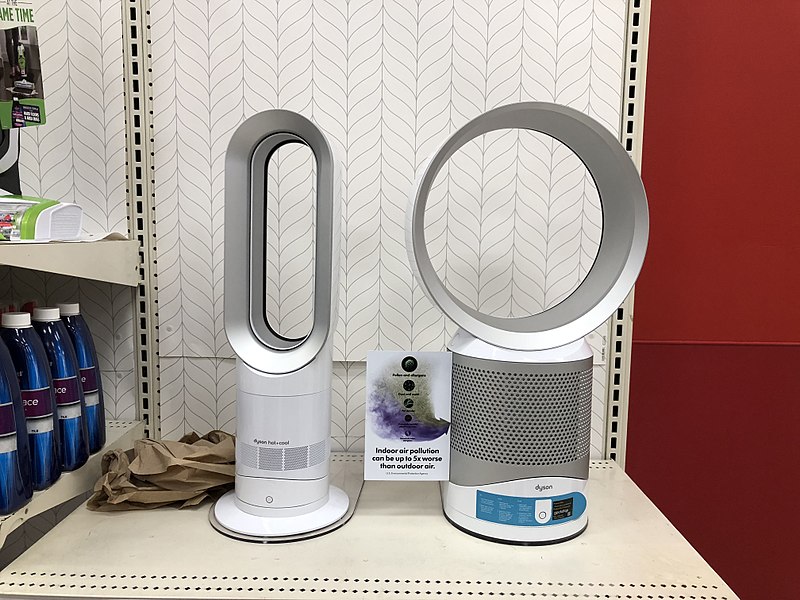Introduction
An air purifier is one of the easiest and most efficient ways to improve indoor air quality. It eliminates impurities and allergens from the air. By removing such particles, an air purifier helps protect you from respiratory infections, and other diseases caused by pollution. It is important to note that an air purifier’s effectiveness plays a massive role in how much smoke, dust, and other pollutants it can remove from the air.
Clean air can dramatically affect your overall physical health. Due to the lack of free-flowing air indoors, pollutants like smoke particles, dust, pollen, mold, and germs often get trapped and build up over time. In such cases, an air purifier can be helpful as it effectively removes such allergens from the air. This article will discuss the benefits of owning an air purifier, the types of air purifiers, and other factors to help you make a more informed decision.
Situations in Which an Air Purifier is Beneficial
Good indoor air quality is crucial for your health because most people spend a significant portion of their time indoors. Allergens and pollutants such as cigarette smoke, household dust, and volatile organic compounds are common in enclosed spaces, causing irritation in your throat, eyes, and skin. Here are some situations where an air purifier can be helpful:
Preventing Allergic Attacks
Various elements inside your home can trigger an allergic reaction or an asthma attack. If you frequently sneeze, have watery eyes, and an itchy nose, you are probably allergic to the particles in your home’s air. A household air purifier with HEPA air filters can help trap these harmful elements and relieve you of these annoying symptoms. According to a research paper published in the Indoor Air Journal, using HEPA air purifiers has helped decrease the levels of fine particulate matter (PM2.5), improving asthma symptoms among adults diagnosed with asthma.
Getting Rid of Dust and Pet Dander
Dust from the environment and pet dander from dogs and cats are among the primary triggers for people with asthma or allergies. These particles are usually 5 microns and 2.5 microns in size, respectively, and can be easily captured by HEPA filters commonly used in air purifiers.
Removing Mold Spores
Airborne seeds produced by fungi are known as spores and can help the organism spread. An air purification system can restrict their growth by trapping them in its filter. This prevents them from landing on various surfaces and making a home there.
Situations Where an Air Purifier May Not Be Necessary
A drop in air quality has been known to cause physical and mental issues, so many prefer to purchase an air purifier to filter the indoor air and push out clean air. However, you do not always need an air purifier. There are some instances where an air purifier may be unnecessary, such as in areas with a lot of airflow or in a household where no one suffers from allergies or respiratory problems.
In Areas With A Lot of Airflows
You may not need an air purifier if you live in a home with a lot of open space with plenty of airflow from windows and open doors. Some kinds of air purifiers, such as UV-based ones, require prolonged exposure to completely remove germs. If high airflow comes into the space where such an air purifier is placed, it will lose its effectiveness.
No Allergies or Respiratory Problems
If you do not suffer from asthma or allergies or pollen does not bother you, you might not need an air purifier. Additionally, an air purifier may be unnecessary if your indoor environment is already devoid of typical allergens and pollutants. For instance, if you live in an area with minimal pollution levels and do not have any pets, an air purifier may not yield any substantial advantages.
Types of Air Purifiers
Four different types of air purifiers are commonly used and available in the market, including HEPA filters, activated carbon filters, ionizers, and UV light.
HEPA Filter Air Purifier
A HEPA filter air purifier is designed to suck air and pass it through various filters using internal fans. As the air passes through these filters, airborne particles and contaminants get trapped, and clean air flows out. One of the biggest advantages of these is that they can capture tiny 0.3-micron pollutants, so smoke, dust, and pollen get filtered out. However, some viruses and bacteria are smaller than 0.3 microns and won’t get trapped in the filter.
Activated Carbon Air Purifier
Activated Carbon Air Purifiers use activated carbon filters, which work similarly to HEPA filters. The air is sucked into the air purifier and filtered to trap allergens and pollutants. The major difference between HEPA and activated carbon air purifiers is the material used in the filter.
Activated carbon has a high porosity and can absorb pollutants efficiently, making it a popular choice. If you live in a highly polluted area, activated carbon air purifiers are preferred because of their strong absorption capacity and ability to remove gaseous pollutants. However, they typically do not have a long life and work best when the filter is replaced every 3 to 6 months.
Ionizer Air Purifiers
Instead of using filters, ionizer air purifiers emit negatively charged ions that combine with airborne particles, making them dense. Due to the density increase, the particles cannot move freely and fall to the ground. This makes these purifiers excellent at inhibiting bacteria, viruses, and mold growth. However, if you suffer from asthma and allergies, they may not be the right fit for you. Due to their technology, they are unable to remove larger particles such as dust, dander, and pollen. They are also less useful against odors and glasses.
UV Light Air Purifiers
UV light air purifiers come with ultraviolet features, which use short-wave UV-C light to destroy allergens like germs, bacteria, and viruses. The method of disinfection is called Ultraviolet Germicidal Irradiation (UVGI). This method involves the air being passed through the UV lamp in the device, which disinfects the air. These purifiers effectively remove bacteria from the air and work quietly, so they are perfect for office and bedroom use.
One major drawback of UV air purifiers is that they cannot remove VOCs or gasses, which may cause symptoms such as coughing, sore throat, and lung disease.
Other Factors To Consider
Indoor pollutants are a leading cause of lung diseases and allergies, so having the right air purifier can significantly improve your quality of life. When purchasing an air purifier, there are various secondary factors you should consider, such as the cost, maintenance, and whether or not it is efficient.
Cost of Air Purifiers
Air purifiers usually cost between $200 and $500. Still, the cost may vary depending on the technology it uses, its efficiency, the brand, and the features it offers. You can even find air purifiers costing $1000 or more. Replacement filters are also a recurring cost that you should take into account. They cost between $40 to $100 depending on the brand and model of air purifier you purchase.
Maintenance and Replacement Of Air Purifiers
The maintenance and replacement of your air purifier and filters depend greatly on the kind you purchase and the frequency of use. If you are on a budget, buying a long-lasting filter will help keep the replacement cost low, but you will need to pay a higher upfront cost. HEPA filters are excellent as they are long-lasting and can be used for six months or even longer.
Certain air purifiers are designed with a filter replacement indicator that activates when it’s close to the replacement date or if the filter gets clogged prematurely. This feature is particularly beneficial for those with forgetful tendencies. It helps them track when to replace the filters, and the filter replacement indicator informs you when to change the filter.
The Energy Efficiency of Air Purifiers
The energy efficiency of air purifiers is measured through AHC, or air changes per hour, which refers to the number of times the device can recirculate contaminated air within a defined space. Ideally, you should choose an air purifier with 3-5 changes per hour.
Conclusion
An air purifier is a practical device to help improve air quality. This device can trap smoke particles, germs, and pollen to provide pollutant-free air, which can significantly help improve your quality of life. These devices can benefit those with respiratory problems and allergies.
However, if you live in a relatively less polluted area or do not suffer from any breathing problems, you may not need to invest in one. Ultimately, you have to assess your individual needs and compare the pros and cons of each type of air purifier before investing in one.




